How to cook the perfect creme caramel
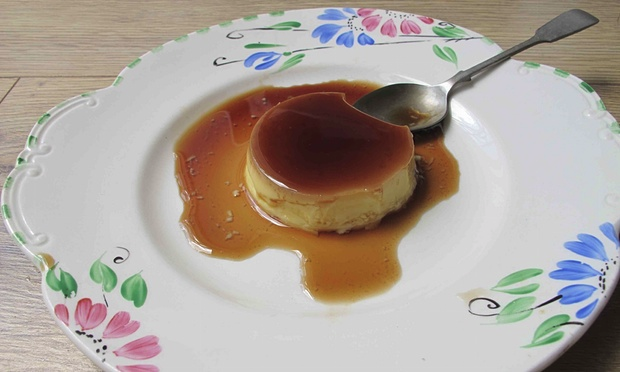
People tend to get a bit misty of eye when you mention creme caramel. No one seems to have eaten one since about 1989, but time has not withered their enthusiasm for the gently jiggling charms of this Gallic classic.
Their disappearance from the national diet might be explained by their former ubiquity. As the late Alan Davidson puts it in The Oxford Companion to Food, "In the latter part of the 20th century, creme caramel occupied an excessively large amount of territory in European restaurant dessert menus," largely thanks to their convenience for the restaurateur.
For me, the creme caramel of the 80s will always come in a little fluted plastic pot from a French hypermarket; I can still hear the satisfying slurp as the contents flopped on to the plate, bathed in syrupy caramel sauce. But, as such magical multipacks aren't readily available in the UK, and most dessert menus have more exciting fish to fry these days, if you too suddenly have a yearning for a fix of rich, quivery custard and dark, sweet caramel, the only thing to do is make one at home. So what's the best way to do it?
The eggs
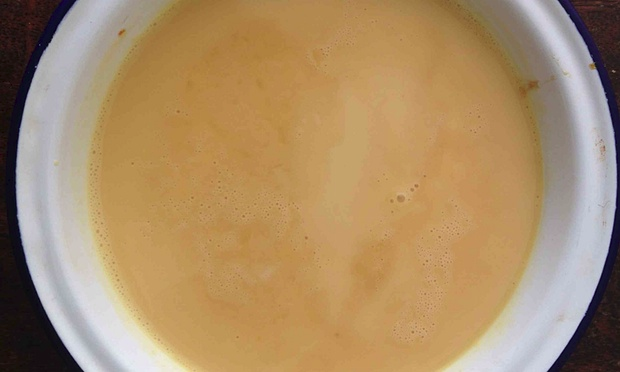
Master chefs of France's creme caramel. Photograph: Felicity Cloake/Guardian
At its heart, creme caramel is nothing but custard. But not all custards are made alike – a rich creme anglaise, for example, should be thin enough to pour, while this one should set firm enough to be easily turned out on to a plate.
In her book Indulge, pastry chef Claire Clark explains that the "firmness of the custard depends on the proportion of egg whites used". Delia Smith uses whole eggs, the recipe in the wonderfully 80s book Cuisine de Terroir: Original Recipes Collected by the Master Chefs of France, and baker and blogger Tamami Haga use yolks alone ("This is what makes this extra-rich and thick in flavour, yet delicate, as well as the softest you'll ever ever taste") and everyone else goes for a mixture of whole eggs and yolks in some ratio.
I find Smith's version a bit rubbery, while the master chefs' and Haga's, though indeed gorgeously soft, taste more like a creme brulee than a creme caramel. After tasting a few, it is clear that the ideal custard for the purpose should be delicately flavoured – anything too rich or sweet will fight with the caramel topping.
Anne-Sophie Pic's Complete Cookery Course uses the same number of yolks as whole eggs, while Lindsey Bareham and Simon Hopkinson's Prawn Cocktail Years goes for twice as many yolks, which I like better; it is unmistakably eggy, but not overwhelmingly so.
The dairy
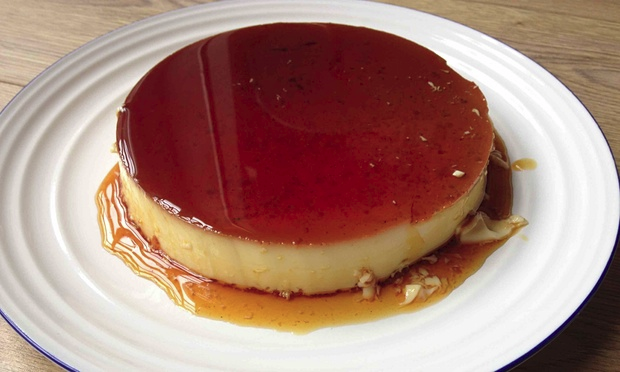
Lindsey Bareham and Simon Hopkinson's creme caramel. Photograph: Felicity Cloake/Guardian
In keeping with this plainish flavour profile, most recipes use milk rather than cream in their custards. Smith's single cream and milk, and Haga's double cream and milk are the exceptions. Though the cream makes the custards even softer and richer in the mouth, I don't think that is what's required here; a more robust, milk-only version seems more in keeping with the spirit of the dish.
The sugar
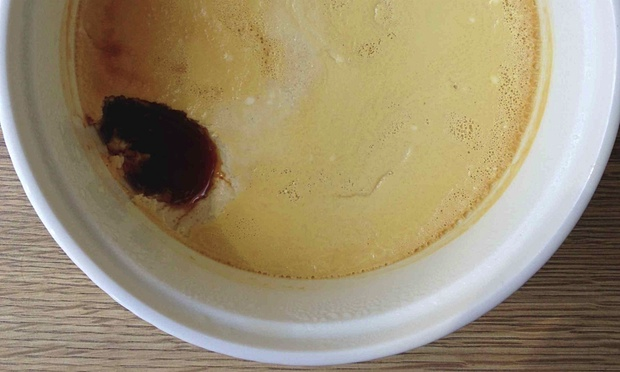
Delia Smith's creme caramel. Photograph: Felicity Cloake/Guardian
Smith uses light muscovado sugar in her custard as well as the more usual caster variety. Though I love its flavour, it competes with the sauce – the custard itself should be fairly straightforward and not too sweet. (The master chefs' version is wincingly sugary and rich – I'm a complete custard fiend, and I have trouble eating it.) Much of the joy of this dish is the difference between the creamily bland custard, with its slight hint of vanilla, and the sweet, almost smoky flavour of the sauce.
The caramel
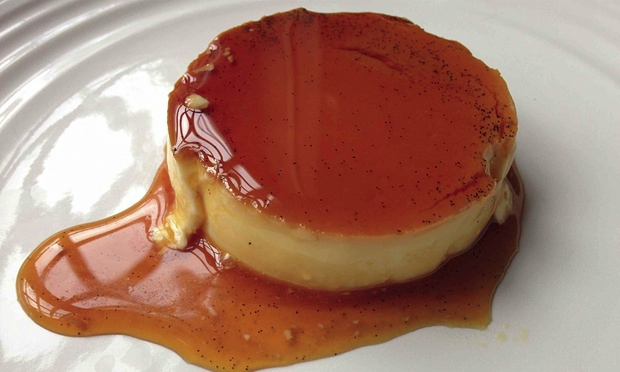
Tamami Haga's creme caramel. Photograph: Felicity Cloake/Guardian
On the subject of sauce, most recipes use a standard caramel variety: melt sugar (not sugar lumps, as the master chefs suggest, which take 10 times as long to dissolve) with a little water until it turns a rich golden colour. However, Pic's version, which deploys equal parts caster and muscovado, knocks my socks off. As she says, this "dark unrefined sugar, with a hint of liquorice, makes creme caramel even better".
That said, using a dark sugar does make it more difficult to tell when the sauce is ready – Pic instructs readers to use a thermometer to take it to 160C (320F), at which point it welds itself to the ramekins. I'd prefer a more liquid sauce. Those crafty master chefs mix the caramel into the custard which, unsurprisingly, makes it even sweeter.
The baking
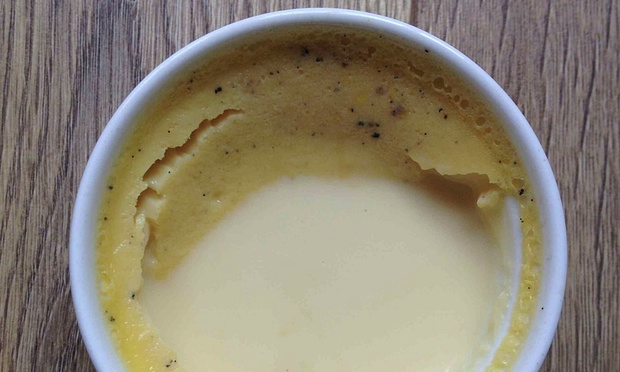
Anne-Sophie Pic's creme caramel. Photograph: Felicity Cloake/Guardian
The master chefs cook their custard on the hob, rather than baking it (which is the final nail in the coffin of my suspicions that they are making a different dish entirely). Although I patiently stir it until it coats the back of a spoon, it fails to set in the fridge. So does Pic's, despite 10 minutes extra in the oven, which I suspect must be something to do with the depth of my ramekins. It proves a valuable lesson: trust the custard itself, not the cooking time stated, and make sure it really does have a "slight tremble" in the centre, rather than a definite wobble, before you take it out of the oven.
Keep the heat moderate – "gentle cooking is paramount for a fine creme caramel", as Bareham and Hopkinson observe; I suspect that part of the problem with the texture of Smith's version is that it is slightly overdone. The Prawn Cocktail Years dish, though perfectly creamy, has an unattractive brown papery skin on top, so I'll be taking Haga's advice and covering mine for most of the cooking time to stop this forming. (She also suggests greasing the dish for ease of unmoulding, which proves an excellent idea.)
Haga, Bareham and Hopkinson are helpful on the subject of keeping as much air as possible out of your mixture for a really smooth, creamy finish. Haga instructs readers to be as gentle as possible when combining the ingredients for the custard – "this is the most vital trick to make your final creme caramel smooth" – while Bareham and Hopkinson suggest leaving it to settle before baking, "with any resultant froth having been previously seen off with a large spoon". Both of these make a real difference, as does sieving the custard into the moulds to ensure no lumps lurk within.
I prefer individual creme caramels rather than large sharing varieties as they feel more theatrical (and are easier to turn out). If you'd prefer to make one big one instead, bake it for about an hour and half, checking regularly after this time.
This is a dish which should be served well chilled – as Pic explains, it is "irresistible when served really cold", while Smith suggests those "feeling really wicked" should top it with some "chilled Jersey pouring cream – ecstasy!". Personally, wicked or not, I think it stands alone as wibbly-wobbly classic.
The perfect creme caramel
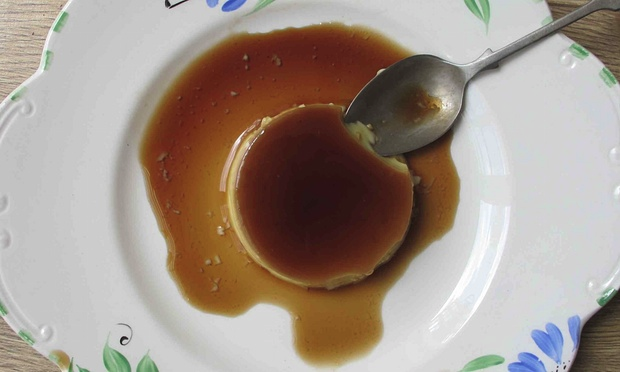
The perfect creme caramel. Photograph: Felicity Cloake/Guardian
(Makes 6)
For the creme:
- 500ml whole milk
- 1 vanilla pod
- 100g caster sugar
- 2 eggs plus 4 yolks
For the caramel:
- 60g caster sugar
- 60g soft dark brown sugar
Grease six ramekins with butter and set aside. Pour the milk into a small pan, cut the vanilla pod in half and scrape the seeds into the pan. Add the pod and bring to a simmer, then turn off the heat, cover and leave to infuse while you make the caramel.
Put the sugars for the caramel in a deep saucepan (as light as possible so you can see the colour better) and just barely cover with water. Bring to a simmer over a fairly gentle heat, then cook until thickened, syrupy and toasty-smelling. (To check if it's done, take off the heat and put a blob on a plate. If it sets, it's ready.) Divide between the moulds, working quickly before it sets, and swirling to cover the bases. Set aside.
Put the eggs and yolks into a heatproof bowl and whisk together. Add the sugar and whisk gently to just combine. Remove the pods from the milk and slowly pour into the bowl, stirring all the time, then leave to settle for 15 minutes while the caramel sets. Meanwhile, heat the oven to 150C/300F/gas mark two and boil a kettle.
Skim the foam from the top of the custard, pour through a sieve into the ramekins and cover each one tightly with foil, then put in a baking tin. Pour hot water into the tin to two-thirds of the way up the ramekins. Bake in the oven for 15 minutes, then remove the foil and bake for another 12-15 minutes, or until the custard is just set but still slightly wobbly at the centre. Remove from the bain-marie and leave to cool. Refrigerate until completely cold.
To unmould, run a slim knife around the outside of each mould and invert on to plates
Creme caramel: a culinary classic or the poor relation of the creme brulee? Which other fancy French foods of the 70s and 80s would you like to see revived?
- 500ml whole milk
- 1 vanilla pod
- 100g caster sugar
- 2 eggs plus 4 yolks